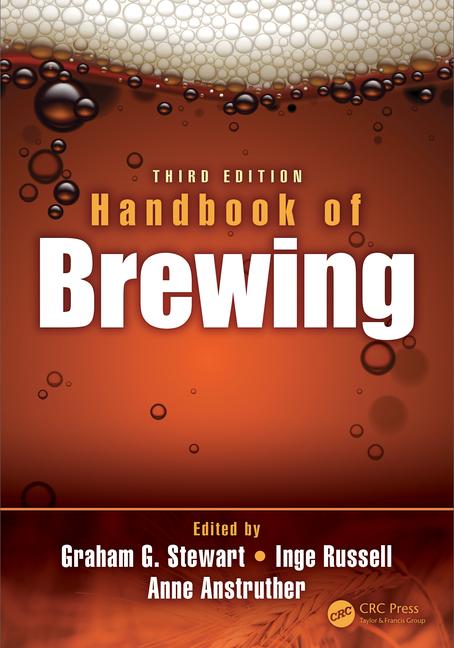Vodka continues to be a leading category in the U.S. spirits industry in terms of sales and growth. Diageo’s vodka lineup includes strong category players, such as Smirnoff, Ciroc and Ketel One, that continue to grow through proper execution and line extensions. Diageo also remains dedicated to keeping its brands fresh by staying in touch with consumer trends.
The company’s recent consumer research indicated that growth in the vodka category would be driven by new and novel flavors, affordable imports and artisanal vodkas, says Jim Moseley, senior vice president of consumer planning for Diageo.
“Vodka used to be prized for its ‘absence’ – absence of taste, absence of color, absence of smell,” Moseley says. “Now consumers expect vodka to deliver differently for different occasions and different tastes. This opens up new areas of interest for consumers, which we see in the areas currently driving growth in the category.”
With distinct trends in mind, Diageo made the decision not to expand its Smirnoff, Ciroc and Ketel One brands, but to create new franchises that are authentic to the respective trends, says Adam Rosen, Diageo’s vodka brand director.
“So much interest in the category is good for vodka and good for the industry overall,” Rosen says. “For Diageo, this plays to our strengths in liquid development and the equity we have built in our iconic vodka brands, which continue to grow. Of course we’ll continue innovating within these trademarks, but right now, there is a real opportunity to create new brands that truly deliver on the consumer trends growing the category. The key is to use our consumer insights to drive innovation, ensuring the right offerings at the right time.”
This year, Diageo unveiled four new vodkas – Rökk, Godiva Chocolate Infused Vodka, Ursus and Moon Mountain. Each new brand was designed with specifically formulated vodkas and flavor options that capitalize on the identified consumer trends, Rosen says.
“With more choice, consumers can choose a vodka that fits what’s important to them,” he says.
In addition to trends in the vodka category, Diageo’s consumer research revealed an increased demand for Scandinavian products that have a worldwide reputation for good design at achievable prices, which inspired the development of Rökk vodka.
In line with the flavored vodka trend, Diageo partnered with Godiva Chocolatier to develop Godiva Chocolate Infused Vodka. The flavored vodkas are available in Chocolate and Chocolate Raspberry, which is Godiva’s top-selling truffle flavor.
The Ursus vodka brand was designed for an overall sensory experience with bold flavors, colors and a color-changing bottle.
Moon Mountain vodka was designed to appeal to consumers who are interested in the journey a product makes from the farm to the table, Rosen says. The variety is crafted in small batches using a copper pot still and is U.S. Department of Agriculture (USDA) certified organic.
Value proposition
Diageo’s consumer research revealed consumers’ recognition of the craftsmanship of products that originate from Scandinavia.
“There’s a huge movement within Scandinavia to make sure that you get these amazingly high-quality items, but at a more affordable price,” Rosen says. “The name of the game on that one is, ‘value for money,’ and that does not mean that it’s the least expensive. It means that the value is incredibly solid, really over-delivering on value.”
Diageo developed Rökk vodka around the idea of high-quality products available for affordable prices. The vodka is made in Sweden using Swedish spring water and European wheat. The product is distilled four times and then goes through a freeze filtration process, which chills the vodka distillate to sub-zero and then filters the vodka. The ingredients and freeze filtration process creates a vodka that’s neutral, crisp and smooth, says Olivia McNeal, innovation liquid director for the company.
Rökk is available in unflavored, Apple, Citrus, Raspberry and Orange varieties that are presented in line with the product’s Swedish origin.
“With Rökk it’s really about the whole Scandinavian aesthetic, so everything from the package to the concept is very minimalistic and simple in its design,” McNeal says. “Therefore, the flavors felt like they needed to follow the same consumer proposition. The flavors themselves are inspired by the glaciers, the snow and the ice of Sweden, so they are very smooth, crisp and light on the palate.”
The Swedish minimalist style is reflected in Rökk’s packaging, which features clean lines and a Viking ship alongside the logo. The Viking heritage is leveraged by the brand to represent masculinity and approachability, Rosen says.
In addition to a digital media program, Diageo has aligned Rökk with gay, lesbian, bisexual and transgender groups. The brand is a national partner of the Gay and Lesbian Alliance Against Defamation (GLAAD) and sponsor of GLAAD’s media awards.
“Partnering with GLAAD to celebrate their 25th anniversary is one example of how Rökk will leverage a number of innovative marketing programs to introduce the brand directly to consumers,” Rosen says. “In addition to creating unique tasting opportunities, we have put together an aggressive and innovative marketing platform to tell the brand story using compelling creative content that we believe will help drive traffic to our retailers and increase call on premise.”
Indulgent innovation
Consumer interaction is a focus of outreach for Diageo’s Godiva Chocolate Infused Vodka line, Rosen says.
“We think one of the best opportunities that we have is for people to taste the liquid, so sampling is going to be a big part of our plan,” he says.
In addition to its previous partnership with Godiva on the chocolate liqueur line, Godiva was chosen again as Diageo’s partner for the development of a chocolate-infused vodka offering because of the chocolate-maker’s authenticity and credibility, Rosen says. The vodka works well as a complement to its line of Godiva liqueurs, he says.
During the innovation process, Diageo’s team worked with Godiva chocolatiers to identify how to best channel the company’s chocolate into a clear spirit, McNeal says. Together, the teams identified some integral components, she says.
“Aroma is really critical to the experience,” McNeal says. “So we had to make sure that we have this amazing aroma when you open the bottle to get the real authentic, true chocolate notes coming through.”
Diageo also had to capture the essence of Godiva chocolate in the vodka, McNeal says.
“We looked at different types of chocolate and then we looked at Godiva and we said ‘What makes Godiva stand apart from the others?’” she says. “It really is about this complexity and a mouthfeel experience, so what we tried to do with the Godiva vodkas is bring that in with real cocoa extracts and real chocolate.”
The Godiva Chocolate Infused Vodka platform also includes a Chocolate Raspberry flavor, which was inspired by Godiva’s No. 1 selling truffle variety. For the fruity flavor, the development team also delved into Godiva’s unique process, McNeal says.
“We had a lot of chocolate raspberry truffles in the laboratory,” she says. “We took it right down to the chocolate truffles to understand how they process the raspberry, where they get their raspberries from, how do they create them into a concentrate and then put them into the truffle? We brought all of that together to really match it as close as we possibly could and I think we really brought the experience to life.”
Also aligning with the Godiva brand is the packaging, which features a vertical gold label McNeal says reminds her of a Godiva chocolate bar.
Sensory experience
Diageo added the first of its four new vodka brands in June with the introduction of Ursus vodka, a line of colored, flavored vodkas that retail for $10.99 for a 750-ml. bottle. Ursus’ Blue Raspberry, Green Apple and Punch varieties are the first colored vodkas in Diageo’s portfolio.
“It’s no secret that flavored vodka has helped to grow the vodka category,” Rosen says. “It’s incredibly popular within the vodka category, but there’s an emerging trend for colored, flavored vodka.”
In addition to its flavor lineup, Ursus also offers an Original vodka variety. Ursus is Latin for “bear” and the vodka’s branding includes a cold-activated polar bear logo developed for the brand.
“On our label are three bears,” Rosen says. “They actually change color when they are in the freezer. The bears turn blue when frozen, which indicates that the product is the optimum temperature - a fun twist for a fun brand.”
Both the brand’s colors and the color-changing packaging were the first to be developed at Diageo, McNeal says.
“What we’re trying to do is create a full sensory experience with Ursus,” McNeal says. “So everything from the bears changing color to the bright colors that catch your eye on shelf to the juicy, bold fruit flavors, all of that as a package is what sells the Ursus brand.”
Diageo plans to feature Ursus vodka at sampling events where it will leverage its polar bear iconography, Rosen says.
“The bear will be integral in terms of sampling and to make sure that our personality comes through,” Rosen says. “This is a fun brand and we’re excited to promote it in a responsible and fun way.”
Artisan crafted
Diageo’s research identified an additional opportunity for its vodka portfolio in the form of crafted, organic products.
“Consumers are really interested in where things come from, in the journey that they take from farm to table and the idea that someone looks after them,” Rosen says. “Organic also is something that’s important to people, and as we looked at that trend we were able to innovate Moon Mountain vodka, which is a crafted, artisanal product. It’s both completely American-made as well as USDA organic certified.”
Moon Mountain vodka is made from Midwestern grains that are distilled in small batches in a copper pot still that dates back to 1934 and was imported from Scotland, McNeal says.
“The copper pot that we use to create Moon Mountain vodka is 75 years old,” she says. “It’s an old still and it imparts a subtle toasted grain and honeyed sweet character to the vodka, which gives it a smooth finish. That was great for us to work on because we were able to work with this really old still and call on the heritage of the brands that Diageo has had for hundreds of years to inspire that product.”
Moon Mountain’s process creates a “connoisseurs’ vodka,” McNeal says.
“The Moon Mountain proposition is all around a real hand-crafted, artisanal approach and obviously we used the highest quality ingredients so organic has a big part to play in that,” she says. “We designed the liquids to be as complex as a fine wine or a fine Scotch.”
In addition to the unflavored vodka, Moon Mountain is available in Coastal Citrus and Wild Raspberry flavors. Coastal Citrus blends bright lemon front notes with mid-notes of orange and sweet citrus and a finish that has a yuzu flavor, which is similar to grapefruit, but sweeter, McNeal says. Moon Mountain’s Wild Raspberry flavor begins with a fresh wild raspberry flavor that mellows into a more jam-like flavor with a touch of pomegranate and has a dry finish, similar to pomegranate juice, she says.
“We really spent a lot of time crafting it to get that complexity built in, and you’ve got to use really high-quality ingredients to get that,” McNeal says.
The brand’s artisanal process also is reflected in the packaging, which has a rounded silhouette similar to a wine bottle.
Moon Mountain’s crafted nature is a focus of its consumer outreach, which is shaped around communities and charitable organizations. The brand will host a series of dinners across the country that pair Moon Mountain vodka with chefs and restaurants that focus on crafted, artisanal food, Rosen says. For each event, Moon Mountain’s Master Distiller Gerry Webb and a mixologist work with the chefs to develop food and drink pairings that complement an artisanal meal, Rosen says.
The innovations are a testament to Diageo’s unique position in the spirits industry, he says.
“Diageo is about the amazingly talented teams of people that have the ability to turn consumer insights into reality by creating highly differentiated, innovative brands,” Rosen says. “The unique nature of these products and the speed and agility with which we are able to get the new products out to the marketplace is truly a credit to the people and the culture of the company.
“It’s a very complicated supply chain,” he continues. “It’s incredibly difficult to make liquids that taste as great as our liquids taste. It’s hard to make sure that our packaging is up to the highest quality. We have a lot of ecological considerations to make sure that we’re a very green organization and that every product is up to those standards that we set for ourselves.”
Although new to the market, the launches are additions to the Diageo portfolio with long-term performance expectations, Rosen says.
“Born from consumer insights that have driven these innovations, each new vodka delivers on the trends driving growth in the vodka category,” Rosen says. “We hope to stand on the shoulders of giants and that 100 years from now the brands that we’re launching today will be some of the best-known and best-loved brands within the vodka category.” BI
Sidebar: Diageo’s innovation process in-depth
From new flavors to its three core vodka brands and the recent introduction of four new product lines, Diageo is dedicated to innovation. The company’s innovation team spans across marketing and product development personnel. Integrating the marketing function with the development function provides Diageo’s liquid innovation team with an opportunity to be involved early on in the process, says Olivia McNeal, innovation liquid director for the company.
“I think Diageo is unique in that the technical team is really involved in the early stages and the integration sometimes lets [the liquid innovation team] initiate ideas for the commercial side of the business,” McNeal says. “This makes the entire team stronger, since it enables us to sort through all the different possibilities to get the right solution. I’m really grateful that our marketing peers bring us in so early because we can influence the process based on the technology or crafting processes we have available. For example, freeze filtration is something that the technical team brought to the table in the development of Rökk, so I think we can really build stronger ideas together because of that early partnership.”
Diageo is dedicated to capitalizing on consumer insights in a timely manner, the innovation liquid director says.
“I think our agility is really key; it’s a real enabler for Diageo,” McNeal says. “We’re able to respond to the trends and sometimes we can actually predict the trends ahead of the marketplace and then get those products ready for launch when the timing is right.”
The team also places an emphasis on packaging. In the case of Rökk, Godiva Chocolate Infused Vodka, Ursus and Moon Mountain vodkas, the new products are each packaged in bottle shapes and designs that are new to Diageo, McNeal says.
In addition to launching individually formulated vodkas, the new brands each include flavored variations, which invites consumers to stay within the brands, says Adam Rosen, Diageo’s vodka brand director.
“When a consumer is brought into your franchise and has a lot of adoration for it, they want to stay within it,” Rosen says. “We wouldn’t want to launch Rökk base vodka and have them love what Rökk is all about and feel as though they would need to go to another trademark for citrus. More and more, consumers expect choice.”
In terms of marketing, Diageo has embraced the opportunities of new technology, Rosen says. Especially with its new launches, Diageo is looking to digital marketing to have two-way communication with consumers about the brands and create a brand community, he says.
“Innovation is such a growth driver within the drinks business,” he says. “We have the best liquid development people, the best packaging people, the best consumer insights and when you put all those together, the marriage is new offerings and a full vodka category of Diageo products that are going to be incredibly well-positioned to win in the marketplace and bring consumers what they want.” BI
Sidebar: Core brand dedication
In addition to its latest introductions, Diageo remains committed to its core Smirnoff, Ciroc and Ketel One vodkas. The brands have established their presence in the marketplace, and Diageo is dedicated to their perpetual growth, says Adam Rosen, Diageo’s vodka brand director.
Smirnoff achieved volume share gains in the United States last year and is a top-selling vodka in North America and internationally, the company says. The vodka traces its heritage back to 19th century Russia and has its own taste profile, says Olivia McNeal, innovation liquid director for Diageo.
“Smirnoff is a very clean product; most vodkas are,” McNeal says. “Vodkas are intended to be neutral, but they can differentiate in terms of the real subtle taste characteristics that you get from products. So there is a citrusy kind of note that you pick up in Smirnoff, which is pretty unique.”
This spring Smirnoff’s flavored vodka portfolio grew with the addition of Spiced Root Beer and Dark Roasted Espresso vodka varieties.
Diageo’s Ciroc brand is distilled five times from French grapes and was inspired by a fine Sauvignon Blanc, McNeal says. The vodka has “a lot of citrus characters coming through, some under-ripe fruit that you pick up, and then a relatively dry finish,” she says.
Ciroc launched in 2003 and in October 2007 it entered into a strategic alliance with entertainer and entrepreneur Sean “Diddy” Combs, which has helped to drive the brand’s popularity, the company says. In February, Ciroc expanded on its Original vodka with the addition of Coconut and Red Berry flavors.
Calling on the heritage of its traditional recipe, Ketel One’s character is derived from the copper pot stills used during distillation, which imparts a slightly sweet spice and warmth, McNeal says. Diageo continues to use the original copper pot still “Distillerketel No. 1,” after which Ketel One was named, the company says.
The super-premium vodka is produced by the Nolet family in Schiedam, Holland, and in April added the Ketel One Oranje variety. The orange-flavored Ketel One blends the taste of fresh orange zest, bright juicy orange and hints of warm spice, Diageo says. BI
Get our new eMagazine delivered to your inbox every month.
Stay in the know on the latest beverage industry marketplace trends.
SUBSCRIBE TODAY!Copyright ©2024. All Rights Reserved BNP Media.
Design, CMS, Hosting & Web Development :: ePublishing





